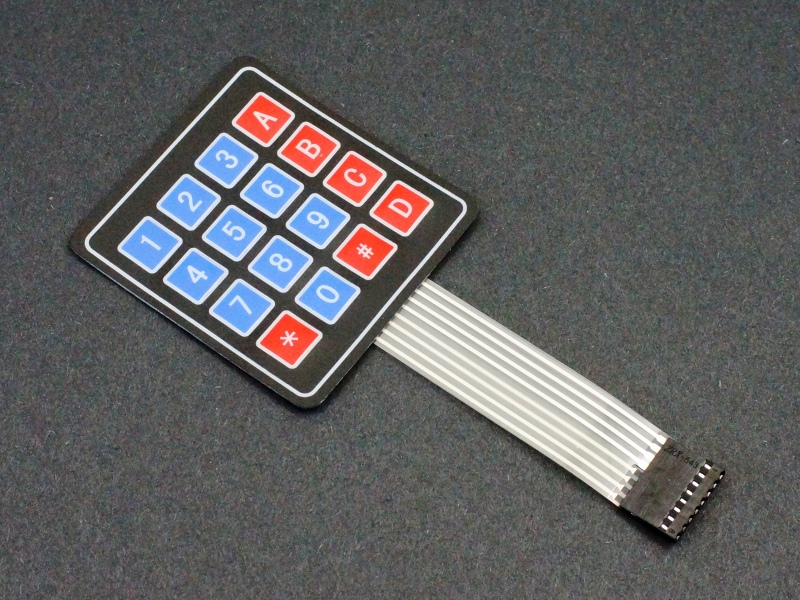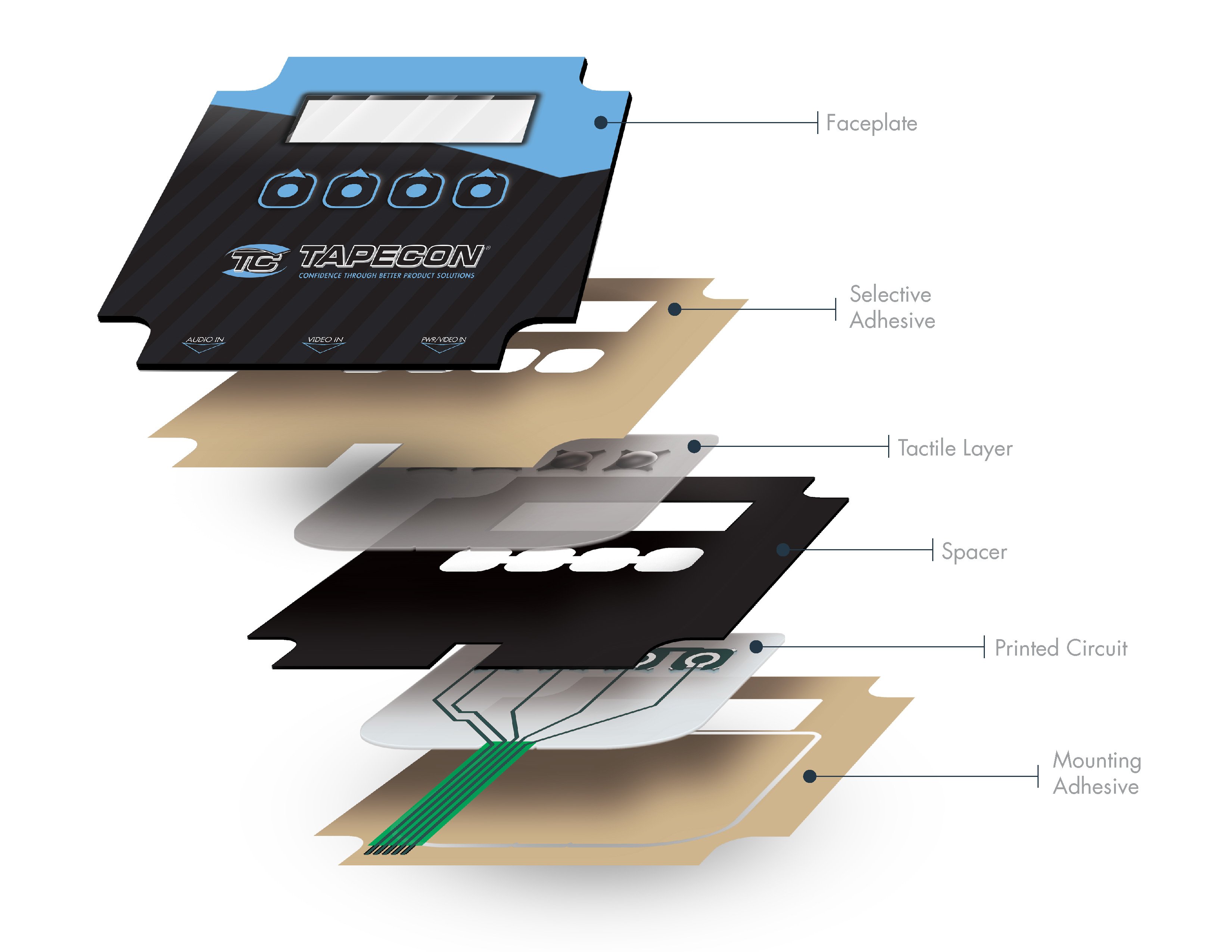Comprehending the Relevance of Membrane Switches in Interface
Membrane buttons are integral elements in the style of reliable customer interfaces, facilitating not only capability however also boosting aesthetic appeal and individual interaction. Their special attributes, such as resistance to ecological factors and personalized styles, make them ideal for a varied selection of applications throughout numerous sectors. As we explore the different benefits and future patterns connected with Membrane innovation, it becomes clear that these buttons are greater than simply parts; they represent a merging of innovation and usefulness. The implications of this modern technology on user experience deserve analyzing better.
What Are Membrane Switches?

The spacer layer, which contains adhesive residential properties, allows for the separation of the circuit layer from the overlay, guaranteeing that the button continues to be in a non-activated state up until pressed. When pressure is put on the overlay, it presses the spacer layer, connecting the gap and completing the circuit in the underlying layer. This design not just lowers the physical room needed for conventional mechanical switches yet additionally improves the sturdiness of the device, as Membrane buttons are generally resistant to dust, moisture, and other ecological variables.
Commonly found in applications ranging from consumer electronic devices to clinical devices, Membrane buttons are essential to modern innovation, supplying a effective and easy to use interface that straightens with contemporary style demands.
Advantages of Membrane Switches
While many switch innovations exist, Membrane Switches offer unique advantages that make them specifically preferable in different applications. One of the key advantages of Membrane switches is their small design, which enables space-saving implementations in tools where genuine estate is limited. Their slim account not only enhances visual charm but likewise helps with lightweight building and construction.
One more significant benefit is their resistance to environmental factors. Membrane buttons are typically sealed versus wetness, dust, and impurities, making them optimal for use in requiring atmospheres, such as clinical gadgets and industrial devices. This resilience prolongs the lifespan of the button, reducing upkeep prices and boosting reliability.
Additionally, Membrane buttons can be personalized to satisfy details layout needs, including unique graphics and colors that enhance user interaction. Their responsive comments choices can likewise be tailored to offer a gratifying customer experience. In addition, Membrane buttons are economical, specifically in high-volume applications, as they can be generated efficiently.
Applications in Different Industries

In the consumer electronic devices industry, Membrane buttons are prevalent in devices go right here such as microwaves, cleaning makers, and push-button controls. Their tactile comments and aesthetic choices boost user experience while offering a smooth, contemporary look. Additionally, auto producers use Membrane buttons in control panel controls and infomercial systems, where space is limited, and user interaction is vital.
Additionally, the commercial market leverages Membrane buttons in control panels for equipment and devices, permitting for instinctive procedure in often rough settings. Their resistance to chemicals and dampness makes sure long life and integrity in these applications. On the whole, the flexibility of Membrane Switches contributes dramatically to their extensive use, making them vital in different technological domains.
Design Considerations for Membrane Buttons

When developing Membrane buttons, several essential considerations have to be taken right into account to make sure optimal capability and individual experience. Firstly, the choice of products is vital; choosing durable, high-grade substratums can improve the button's durability and resistance to environmental variables such as dampness and temperature variations.
Secondly, the style of the visuals overlay ought to focus on clarity and simplicity of usage. Icons and message must be understandable, and the design needs to assist in intuitive interaction (membrane switches). Furthermore, responsive responses is vital; including a tactile dome or other systems can boost the user experience by supplying physical verification of activation
Another crucial factor is the switch's electric performance. Designers have to ensure that the conductive traces are appropriately designed to reduce resistance and stay clear of signal disturbance. This involves evaluating the needed actuation force and ensuring compatibility with the electronic parts they will interface with.

Future Fads in Membrane Innovation
As modern technology continues to advancement, Membrane buttons are poised to develop substantially, driven by technologies in materials and manufacturing methods. One arising fad is the incorporation of sophisticated materials, such as conductive inks and adaptable substratums, which improve toughness and lower the overall weight of Membrane switches. These materials not only improve the tactile action however additionally permit for the look at this now layout of switches that can withstand harsher environmental conditions.
Additionally, the combination of touch-sensitive innovations is changing standard Membrane Switches into more interactive interface. Capacitive touch sensing units installed within Membrane switch panels can offer a much more user-friendly and responsive user experience, aligning with the growing demand for sleek, modern designs in consumer electronic devices.
In addition, improvements in printing methods, such as digital and 3D printing, allow rapid prototyping and customization of Membrane buttons. This versatility allows manufacturers to react quicker to market needs and customer preferences.
Finally, sustainability is coming to be a significant focus, with suppliers exploring eco-friendly products and procedures. As these trends unravel, the future of Membrane innovation promises boosted capability, aesthetic appeal, and environmental duty, solidifying their duty in sophisticated interface across numerous markets.
Conclusion
To conclude, Membrane Switches represent a vital part in the style of user interfaces, incorporating performance with visual flexibility. Their benefits, consisting of sturdiness and resistance to ecological aspects, make them suitable for varied applications across numerous markets. Furthermore, thoughtful style considerations improve user communication and experience. As developments in technology proceed, the evolution of Membrane buttons is expected to additional improve interface, driving technology and enhancing use in a progressively intricate technological landscape.
Membrane buttons are essential elements in the layout of reliable user interfaces, helping with not just capability but also improving visual allure and customer interaction.Membrane Switches offer as a crucial part in numerous user interfaces, helping with a seamless interaction in between individuals and digital tools.While countless switch technologies exist, Membrane Switches offer distinct advantages that make them especially desirable in different applications.Additionally, Membrane buttons can be tailored to fulfill details layout needs, including one-of-a-kind graphics and shades that boost customer communication.In verdict, Membrane Switches stand for a crucial part in the style of individual interfaces, integrating performance with aesthetic flexibility.
Comments on “A Comprehensive Guide to Membrane Switches for Product Designers”